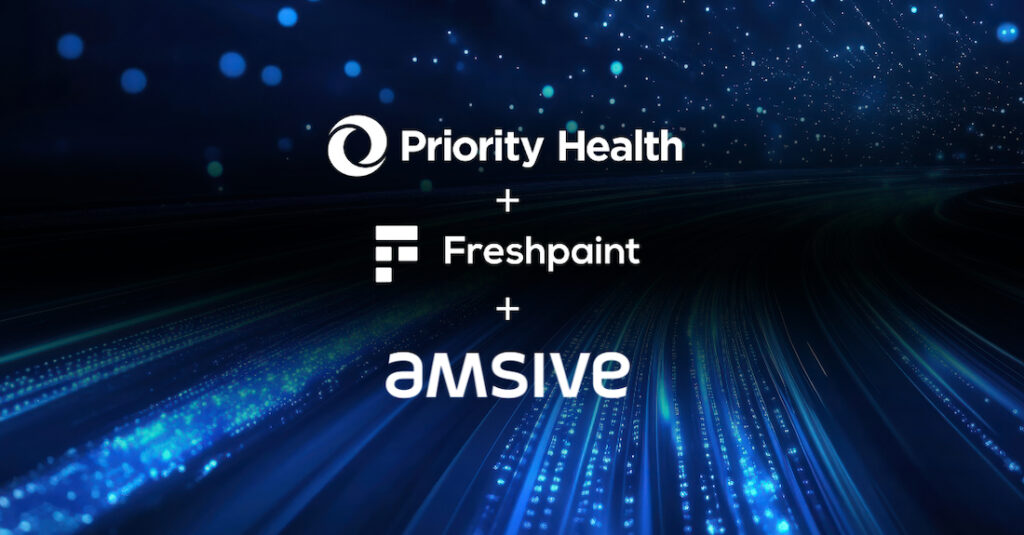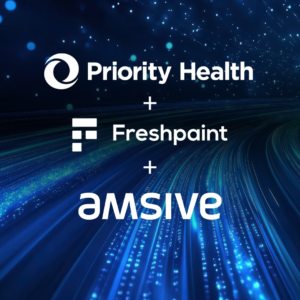It’s no secret that advertising costs have been inching higher and higher over the last year. In fact, Search Engine Land reports that in 2024 ad costs have gone up though performance has remained flat. As a result, digital ad spend in healthcare is projected to reach $20 billion in 2024. Health systems are facing increased pressure to lower overall costs per acquisition (CPA) as the market grows more and more competitive.
Marketers need to invest in marketing channels that will be both sustainable and effective for overall CPA health. With the increasing popularity of telehealth providers, paid media and digital channels are prime investment targets when trying to capture audiences that are actively in the discovery and exploration phase.
With detailed analytics and real-time performance tracking, paid media campaigns can be continuously optimized to maximize investment and reduce CPAs. In this post we’ll share some ways you can analyze your audience, paid media channels, such as Performance Max, and invest in your online experience to efficiently manage your CPAs.
Jump To:
Dig in & analyze your audience data
There’s nothing worse for a tightened marketing budget than ads that don’t reach their intended target. Balancing the digital channels where your audience is spending the most time with your target CPA will help you decide where to push your marketing investment.
Dig into the data that you already have about your audience. Prioritize zero- and first-party data from customer interactions, such as surveys, intake forms, and market research. Once you’ve compiled your data, segment it to build more targeted and effective strategies.
With segmented audiences in place, you can develop and deploy marketing strategies that address the needs and preferences of each of your segmented groups. With 81% of consumers preferring personalized marketing, it’s important to tailor your messaging and outreach to suit an individual’s unique needs and concerns. Keep in mind that your messaging will also need to suit the form of whichever channel you choose to use.
Choose your channels
Selecting the right paid media channel, whether it be social media, paid search, display, programmatic, or Performance Max (PMax), can help you reach the ideal audience or prospect that you’ve identified. Understanding which channel aligns best with your audience’s behavior and preferences is crucial.
Efficient channel use also allows you to better allocate budgets, contributing to higher conversion and lower overall CPAs. Focusing on channels with high engagement and historically favorable conversion rates will help maximize your return on investment.
Each channel offers its own unique opportunities to reach your ideal audience, including:
Display
A top-performing upper-funnel channel, display advertising can help health systems improve patient engagement without bloating CPAs. It’s a strong driver of efficient impression volume that is still highly targeting toward audiences. It can help build up retargeting pools by generating significant amounts of high-quality traffic to websites where consumers are likely to reengage further down the funnel. By using display, you can boost brand visibility, remaining top-of-mind when people are considering healthcare services.
It’s important for health systems marketers to keep their brands for when people are ready to make their health decisions. It can be tricky to balance targeting people that are “in-market” when they are “in-market” while ensuring that your targeting methods and data use are HIPAA-compliant.
You can also use retargeting campaigns to reach audience segments based on their previous interest in your site or services. However, monitor your frequency caps to avoid ad fatigue. Nothing will turn someone’s brain off faster than being shown the same ad repeatedly.
It’s important to note that display is recommended as a largely upper-funnel tactic, as consumers are less likely to use it as a conversion channel. Budget should be shifted to lower funnel channels, like search, to capture the demand that display generates.
Programmatic
Programmatic offers multiple advantages for health systems that are working on lower CPAs and optimizing conversions. As with display, targeting is incredibly precise. This is, however, another channel in which HIPAA-compliance and data privacy must remain top of mind for marketers.
Real-time bidding and automated ad placements allow you to reach potential patients at key moments across their customer journey. This approach can help maximize ad efficiency and reduce unnecessary impressions, ultimately lowering CPAs.
Paid social
Similar to paid search, paid social allows for highly specific targeting. Platforms like Facebook and Instagram allow health systems to target users using detailed demographic data.
Paid social ads are also more visually engaging. Using interactive forms like videos, carousel ads, and interactive content can help improve your overall engagement.
Paid search
Prospective patients from Baby Boomers to Gen Zers are more likely to turn to search engines to start their medical research than any other channel. Paid search offers marketers the chance to capture the attention of high-intent users that are actively looking for specific health services. This intent-driven channel ensures that your marketing dollars go toward people that are already interested in or looking for healthcare solutions.
As the use and popularity of responsive search ads grows, we have seen Google search ads become more and more relevant to each individual user and their individual and unique searches.
This alternating messaging also allows for more flexibility in adding and changing headlines to reflect seasonality, allowing health systems marketers to better reflect regulations and time-sensitive messaging.
Refine your keyword strategy based on your performance data and emerging trends. Where relevant, use long-tail keywords that your ideal prospects are engaging with. Targeting is also highly customizable on paid search platforms. You can tailor your ads based on keywords, geography, and demographics, allowing you to target your segmented audiences.
Performance Max
Performance Max offers key benefits for a comprehensive, cross-channel strategy. It pushes ads across all Google properties across search, display, YouTube, and Gmail, allowing health systems to reach potential patients on various platforms, all run through a single campaign. This ensures both a broader overall reach and higher engagement, improving conversion rates and lowering CPAs.
Performance Max leverages AI to analyze a vast amount of data, allowing it to optimize ad delivery in real time. The platform automatically adjusts buds, targets, and can dynamically generate headlines or descriptions based on landing page content. By strategically setting and monitoring audience signals and negative keywords, you can help set campaign guardrails that generate better performance.
These campaigns ultimately maximize performance based on your specific campaign goals. This flexibility means that Performance Max campaigns can help you reach people wherever they are in their health journey, whether they are looking broadly for a new system, a specific specialty, or are ready to schedule an appointment.

Optimize your ads using best practices
While selecting the right channel for your ads is important, you also need to optimize them using the best practices. Remember that healthcare can be a daunting topic to approach. Use straightforward language to explain how you can improve a potential patient’s health or solve their problems.
It’s also important to incorporate strong and relevant CTAs, such as “Get Started Today,” or, “Book an Appointment,” or, “Schedule a Consultation,” wherever relevant.
Remember to test and refine your creative to gain a better understanding of which elements are best reaching and engaging your audience. A/B testing can help you improve your ad creative and achieve lower CPAs. This data-driven approach allows for continuous optimization of ad performance, ensuring that you capitalize on your most effective ad elements.
While Performance Max can dynamically adjust your ads, remember that your creative assets should be optimized to suit the array of Google products, such as Gmail, Search, YouTube, Discover, Display, Maps, and more.
Build helpful content on your blog and landing pages
Google has published two helpful content updates in the last year. Health systems are included in the high-traffic your money, your life (YMYL) category, and it’s important that any of your published content is both informative and engaging. With the insights gleaned from your audience data and segmentation, create educational content that addresses common issues, questions, and knowledge gaps.
This content can also help establish authority with your audience, as well as in your field.
Helpful content has several other benefits, including:
Increased organic traffic
Well-crafted blogs and landing pages optimized for relevant keywords can improve your search engine rankings. Higher organic visibility can lead to more traffic without additional paid advertising.
Improved engagement
Relevant content can attract and engage site visitors, keeping them around for longer. Google rewards engagement with higher quality scores, which can lead to a lower cost per click on paid search campaigns.
Nurturing leads
Educational content, how-to videos, and how-to guides can nurture leads on their way down the funnel, making them more likely to convert at a lower cost compared to cold leads.
Higher conversion rates
Content tailored to your audience’s needs can boost your overall conversion rates. By creating landing pages with helpful, targeted content, you can increase the likelihood that your ideal patient will take your desired action, lowering the costs associated with their acquisition.
Invest in local SEO to reach customers close to you
While telehealth is growing in popularity, there are some maladies that will always require in-person care. When your audience needs health services, they’ll often search for nearby providers. A local SEO strategy improves the odds that when they do, they see your business and this starts with claiming and optimizing your Google Business Profile. In addition to organic local SEO, you can also advertise your facilities by using Paid Local Ads (PLAs). By going beyond the essentials and providing valuable, detailed information, health institutions can increase their visibility in local search results and attract more potential customers.

Paging your next best patient
As advertising investment in the healthcare field continues to climb, health systems are challenged to operate in a way that honors their responsibility to patients while maintaining sound financials. By focusing on data-led audience segmentation, tailored ad creative, and real-time performance tracking, health systems can invest in marketing spend, lowering overall CPA while improving acquisition and performance. Tapping into high-intent, high-volume, paid media channels to reach your prospective patients at the ideal time is the best way to ensure that both your budgets and your patients are satisfied.
Working to ensure that your data and privacy strategies are compliant with the evolving landscape? Learn which states have updated their privacy laws recently, or, let’s talk about how to achieve more for your marketing—and your business.







